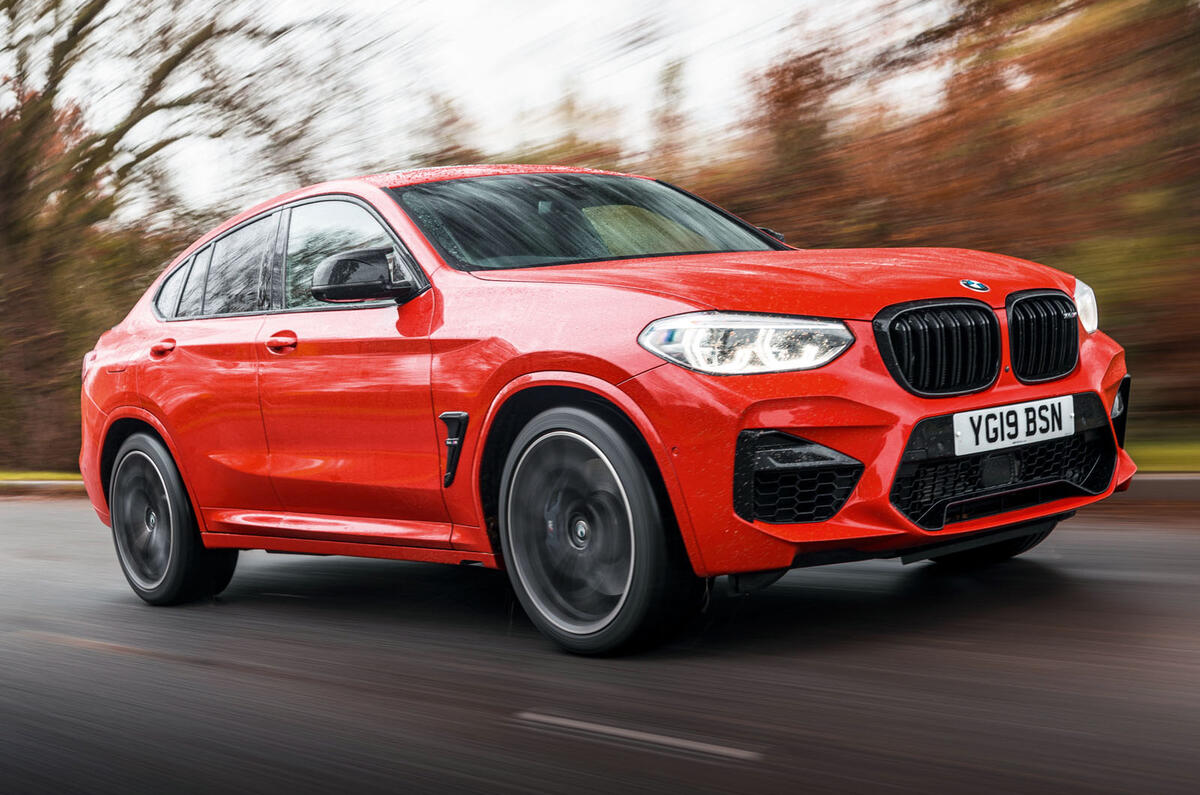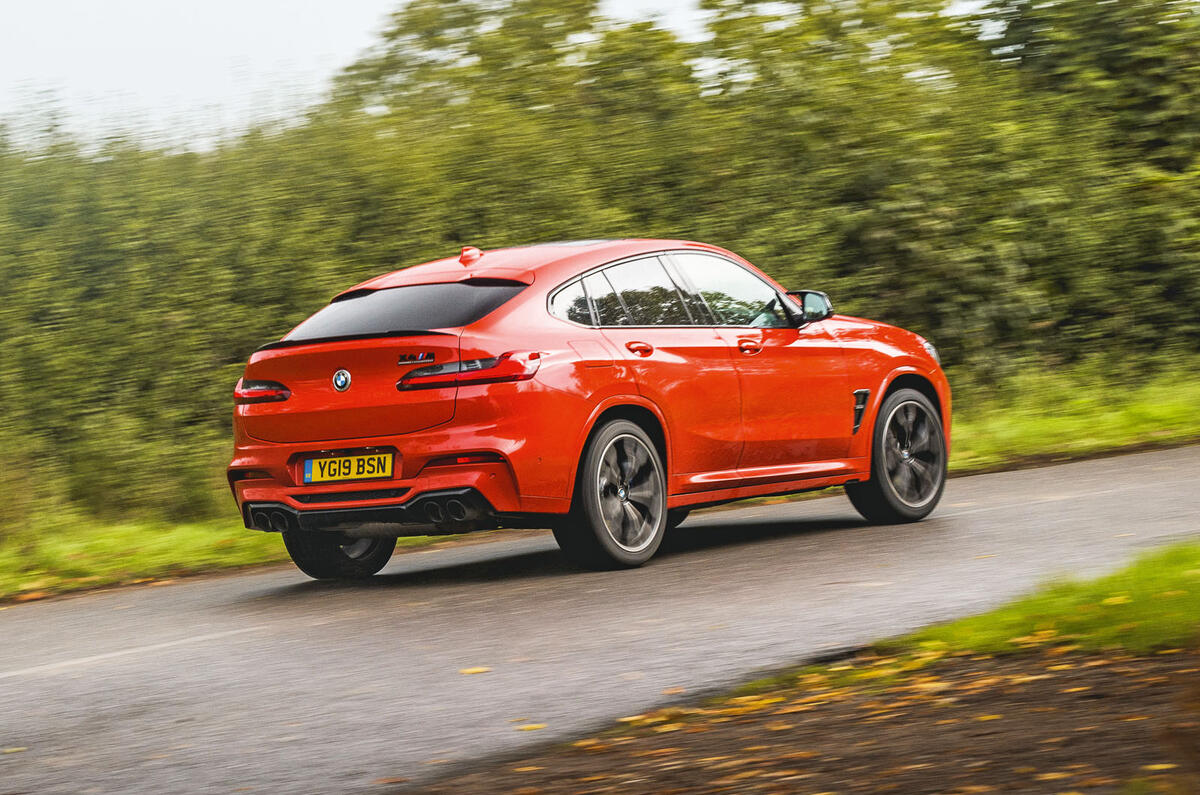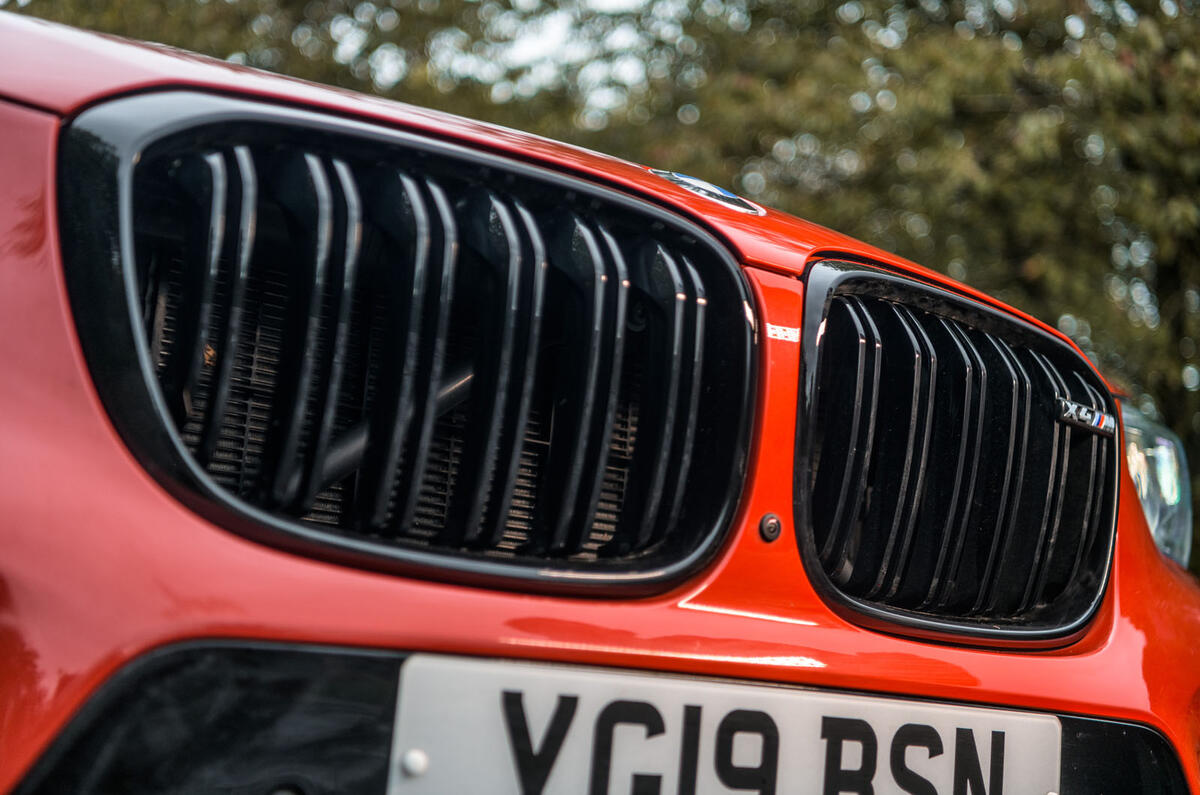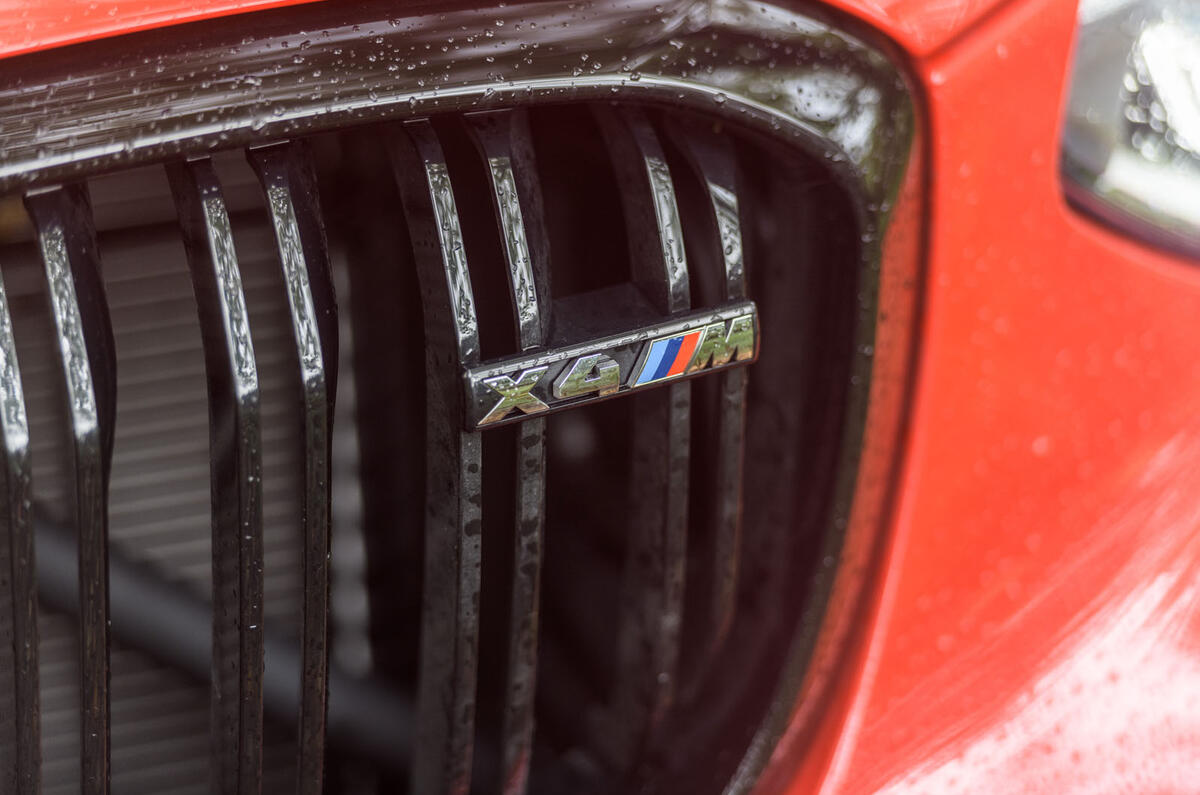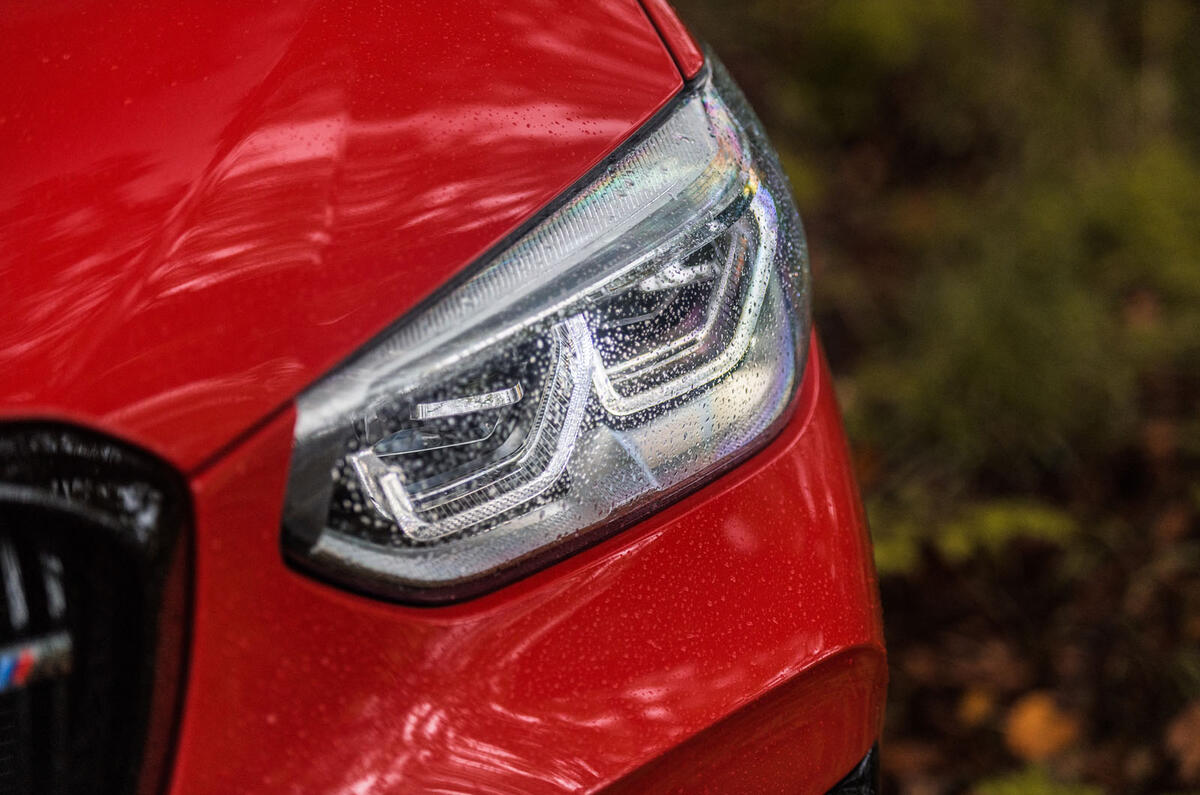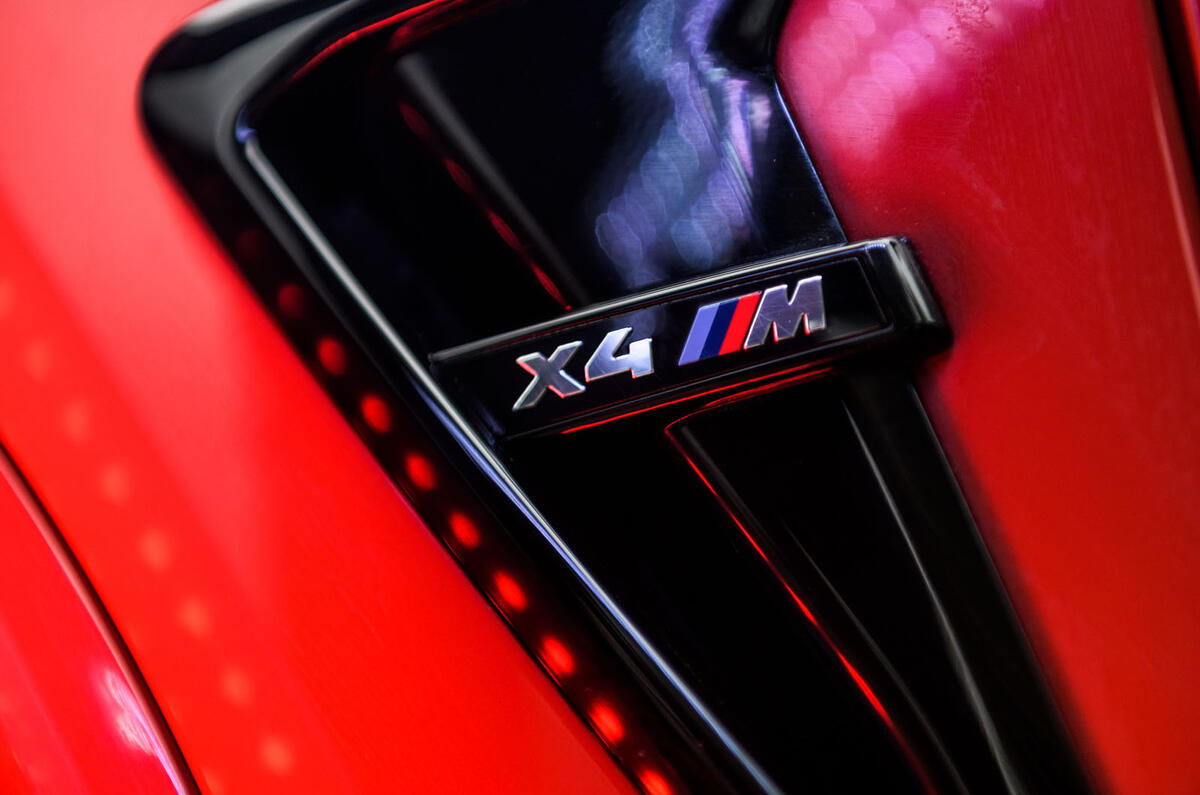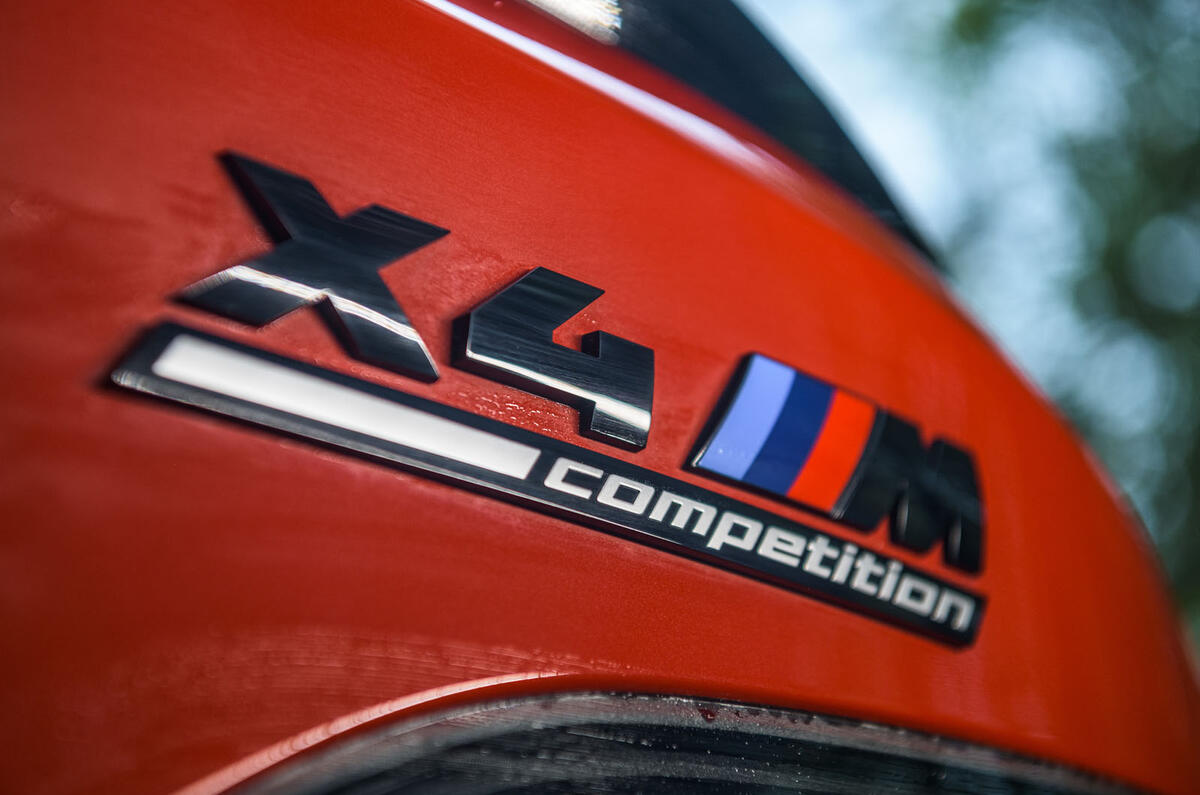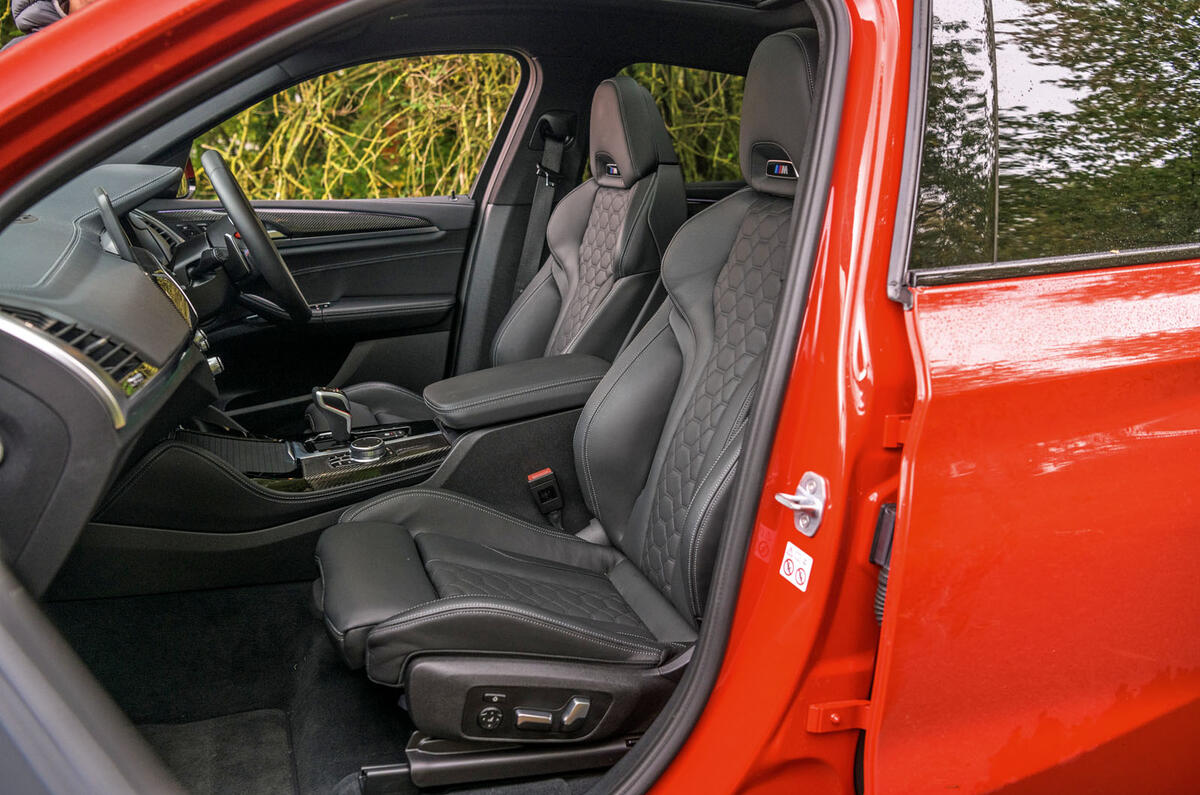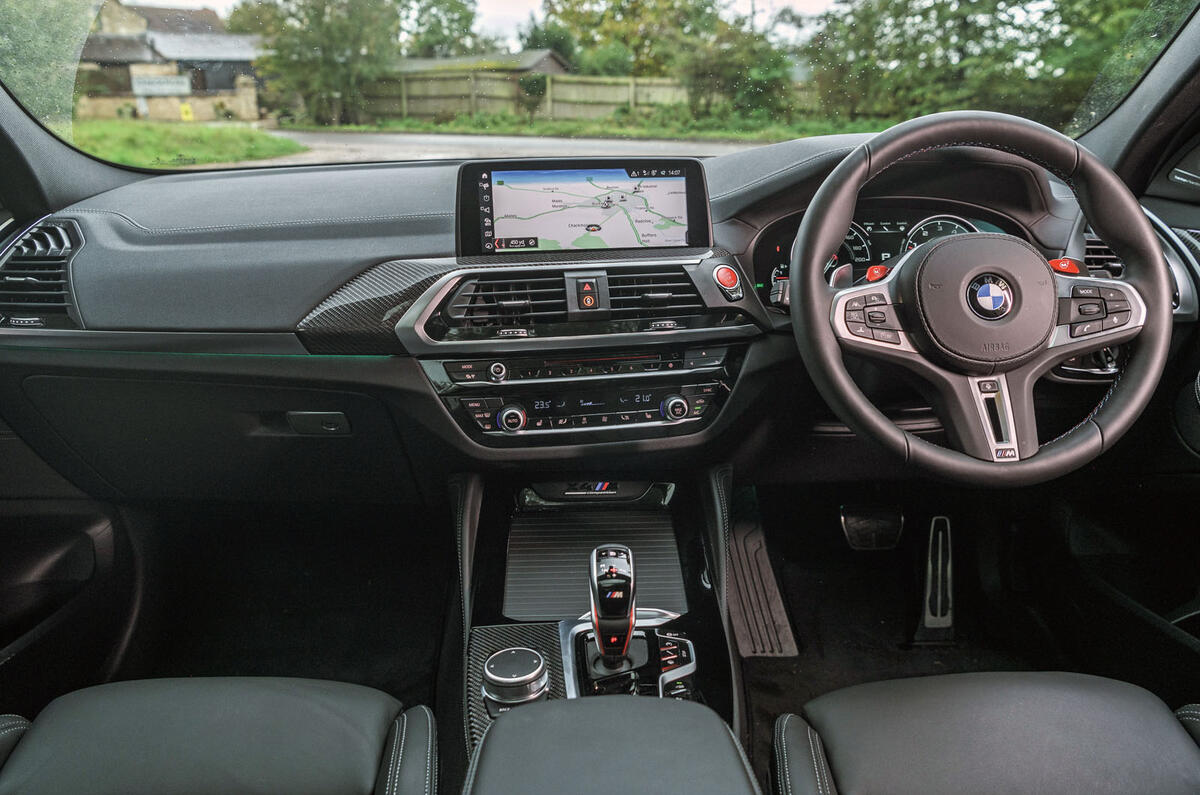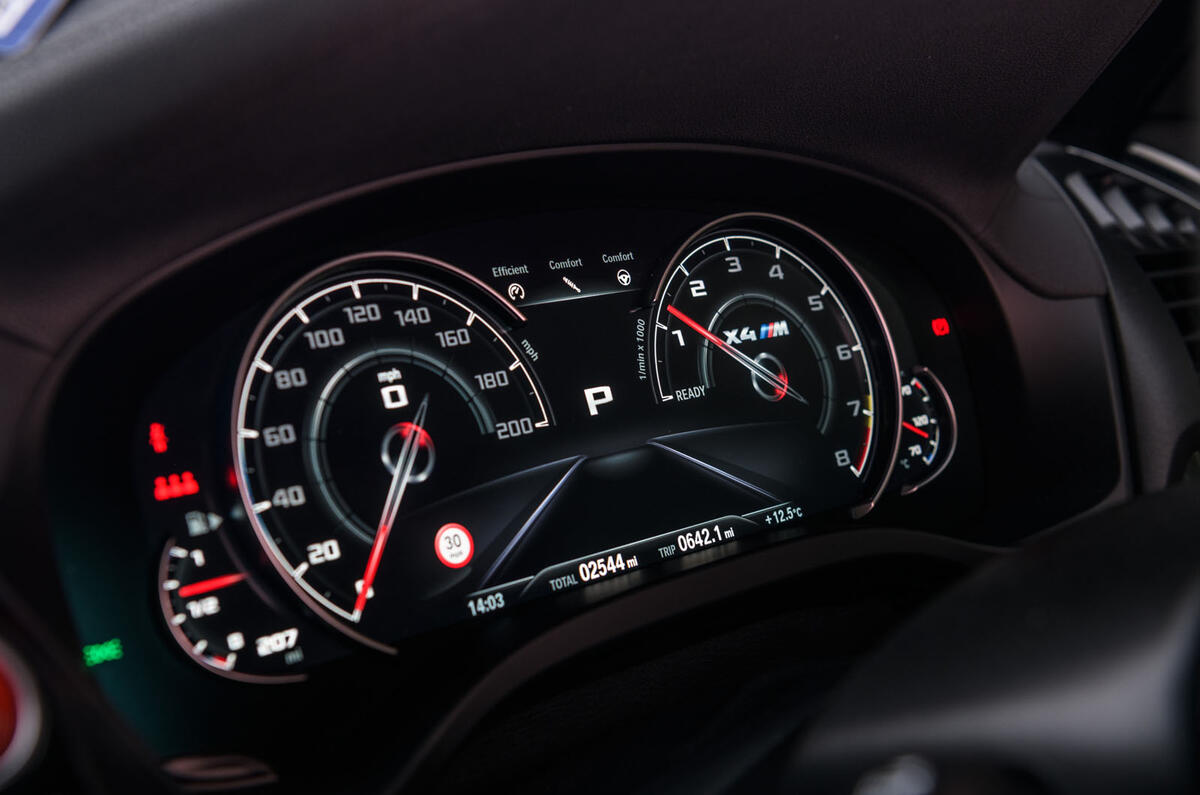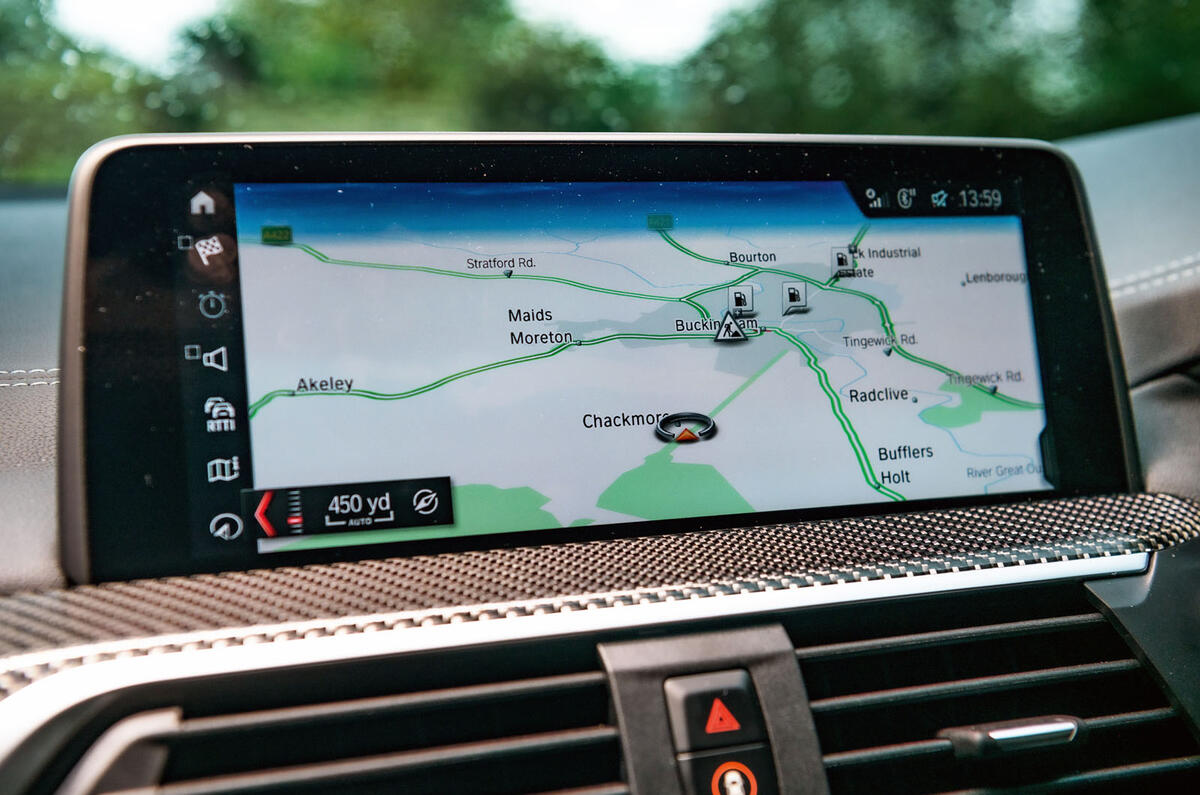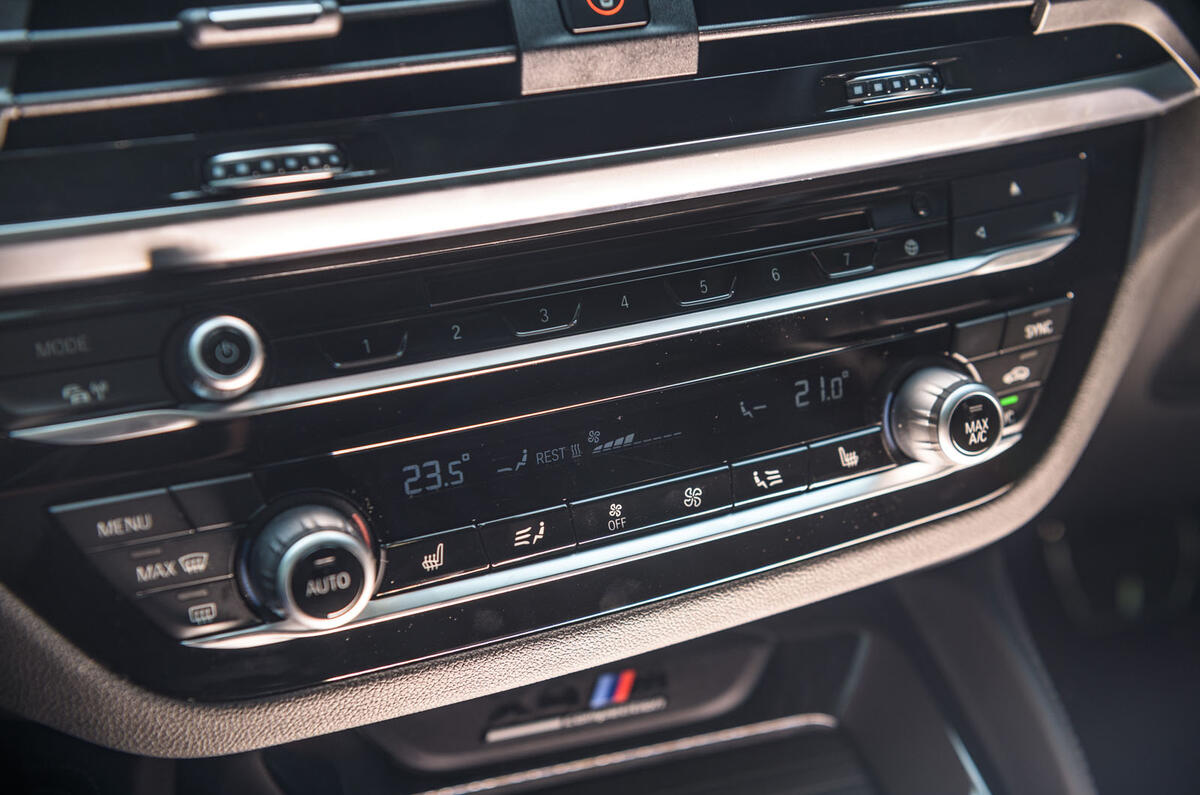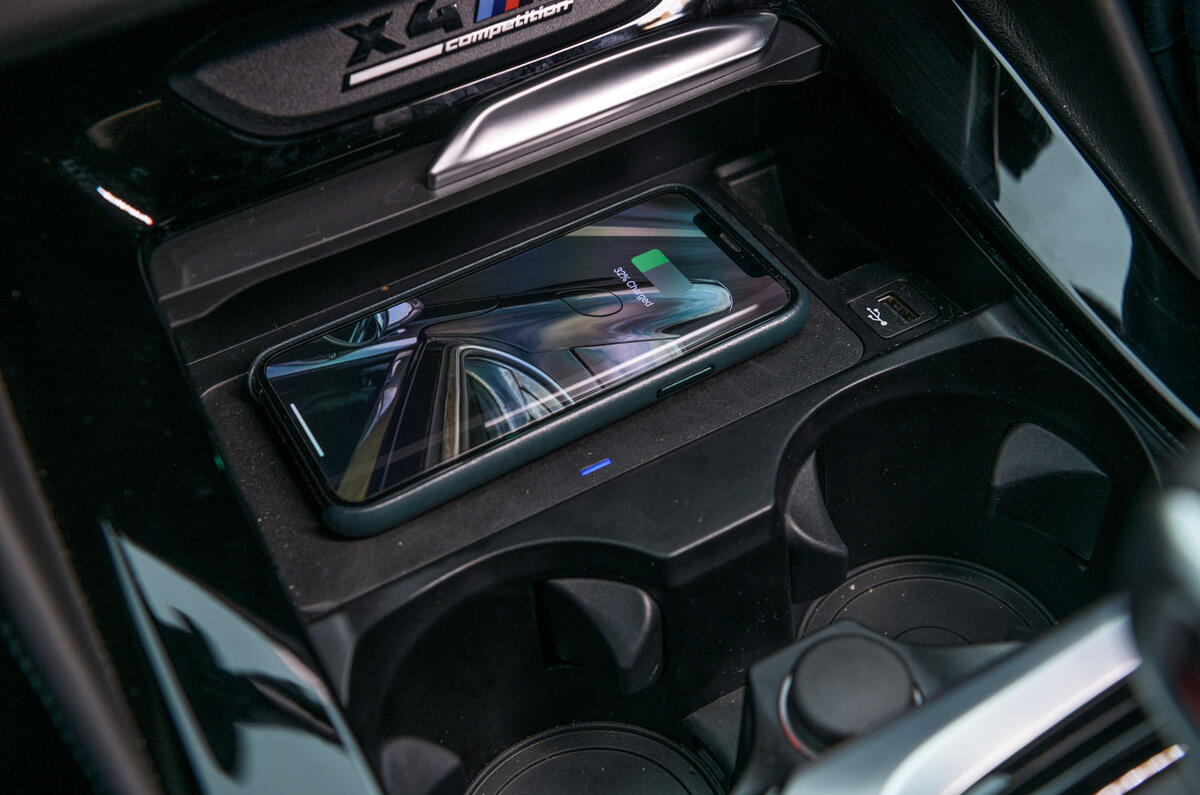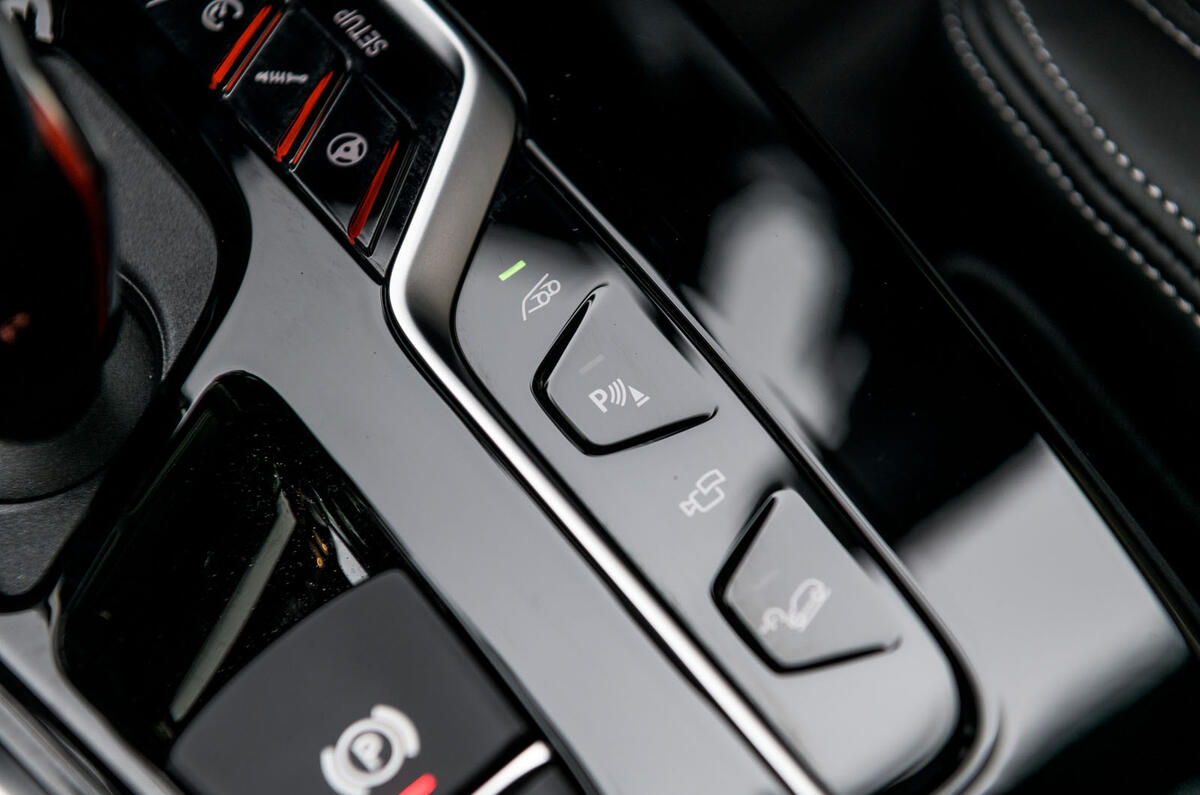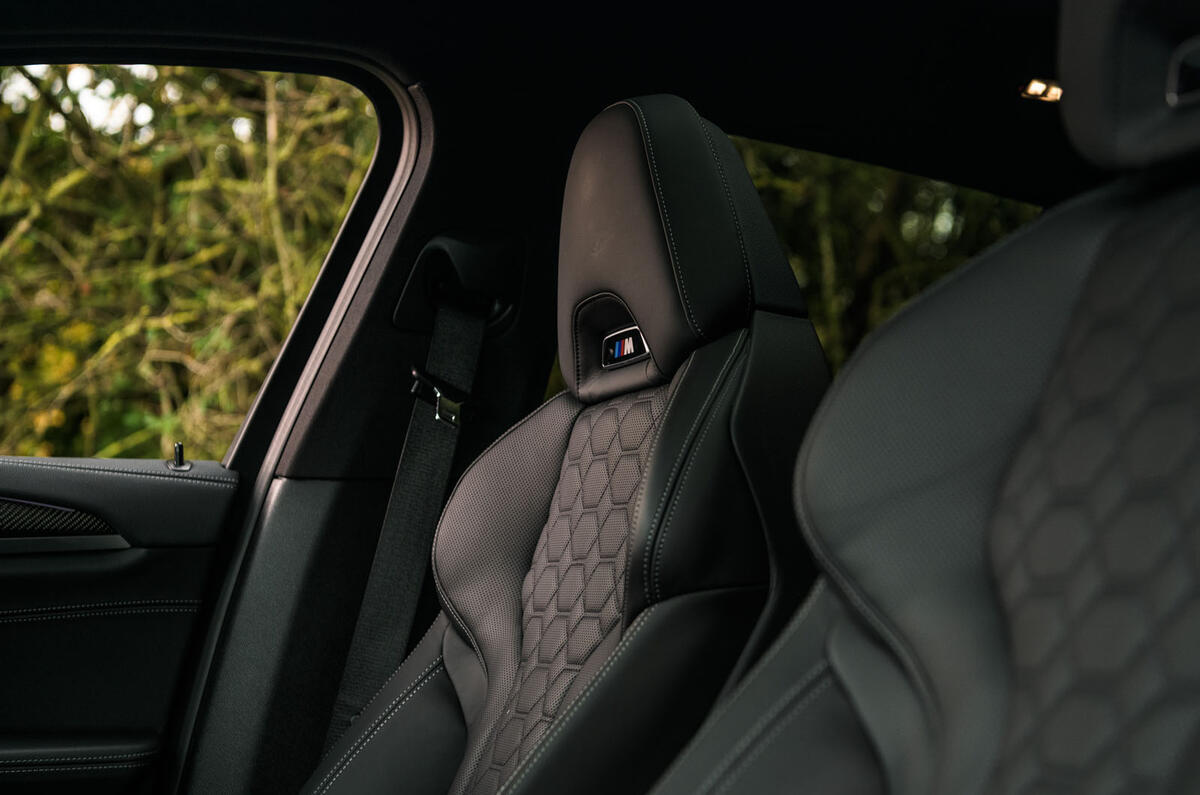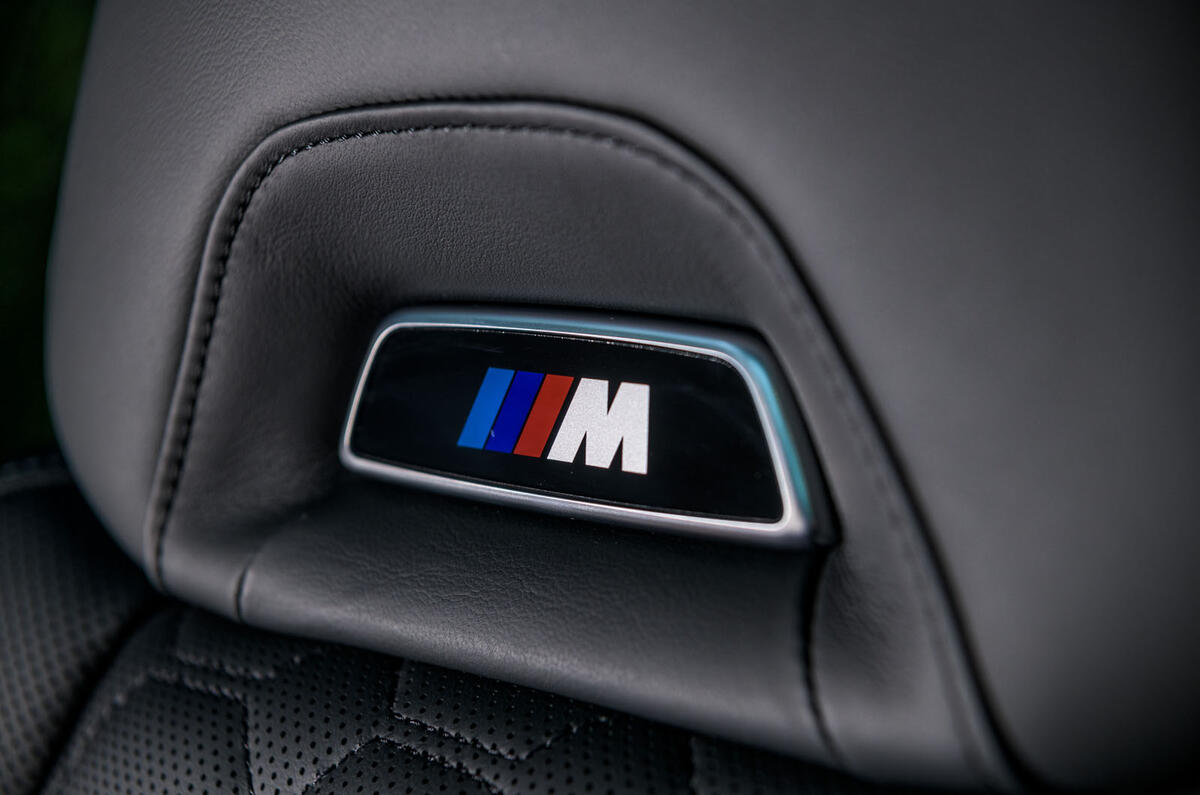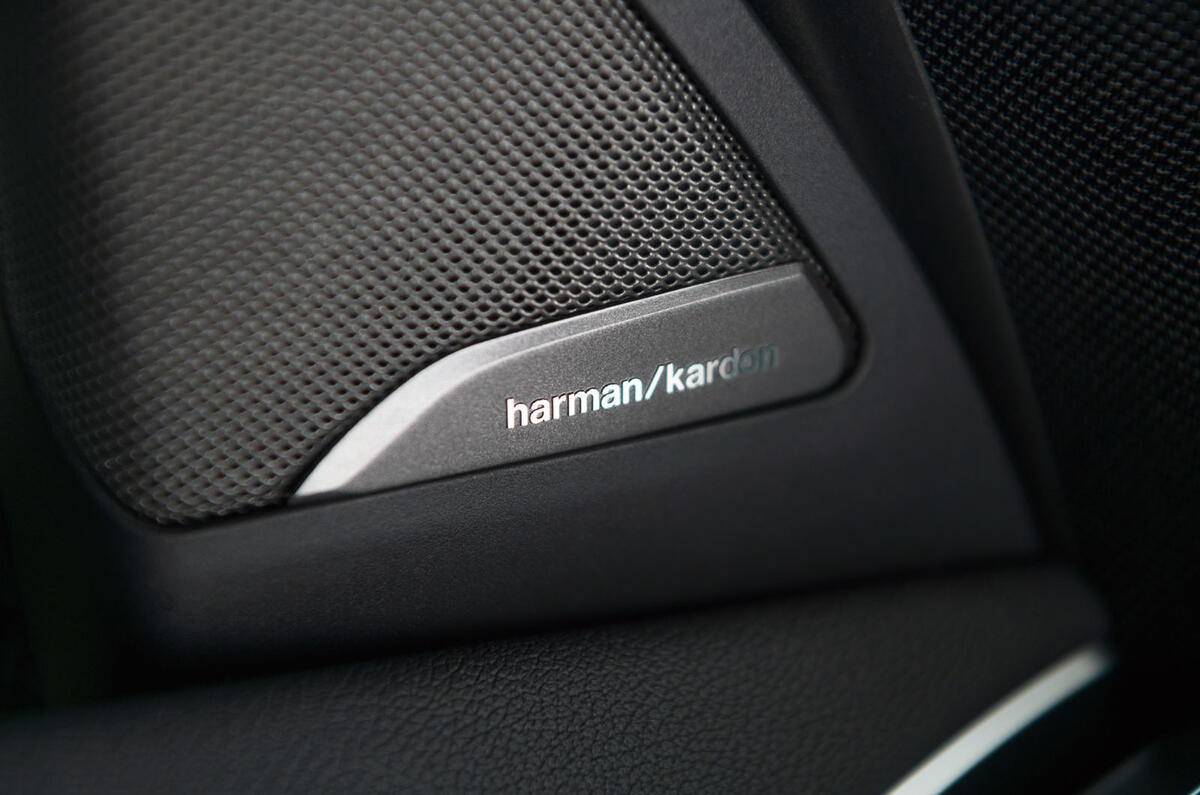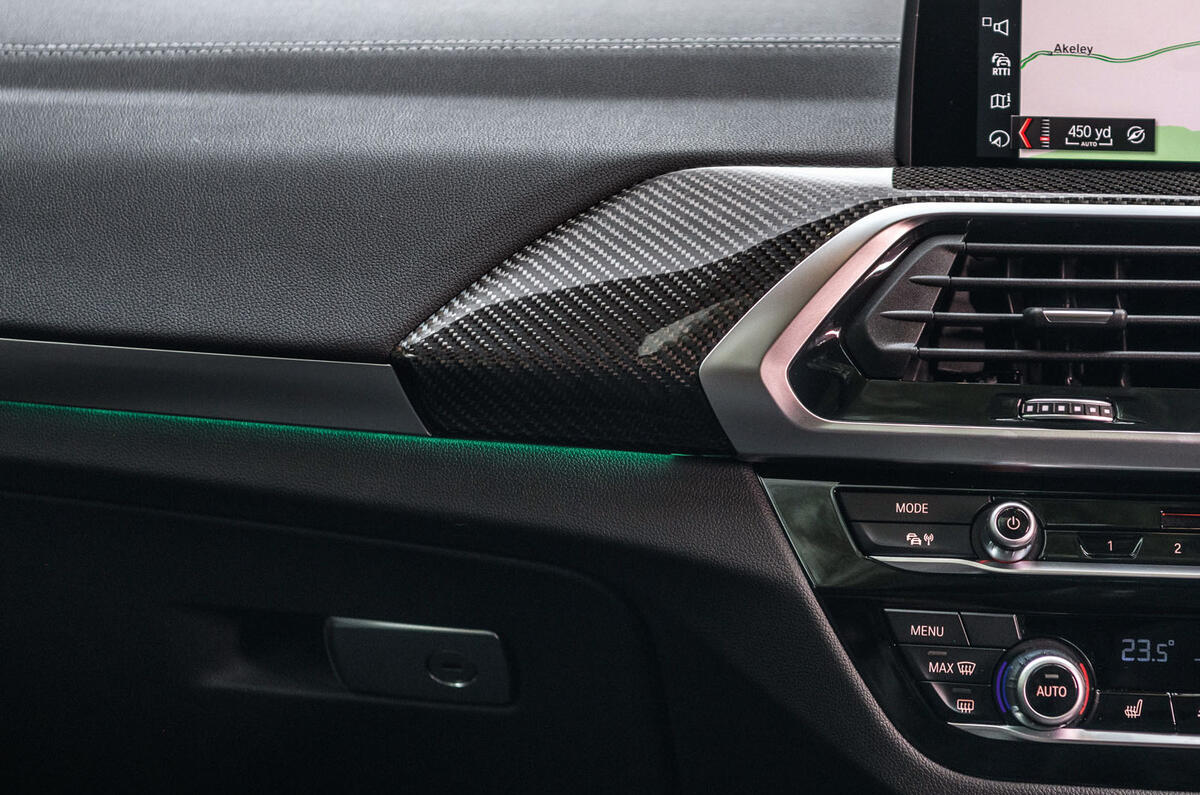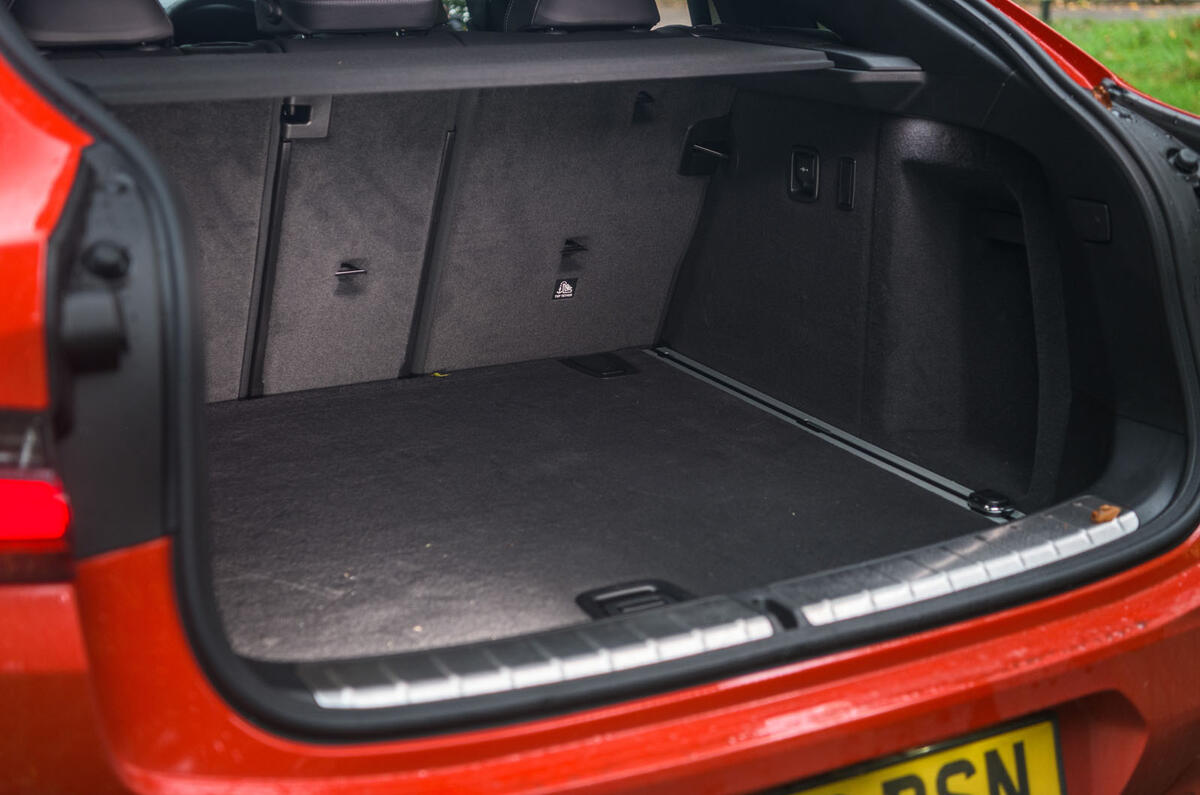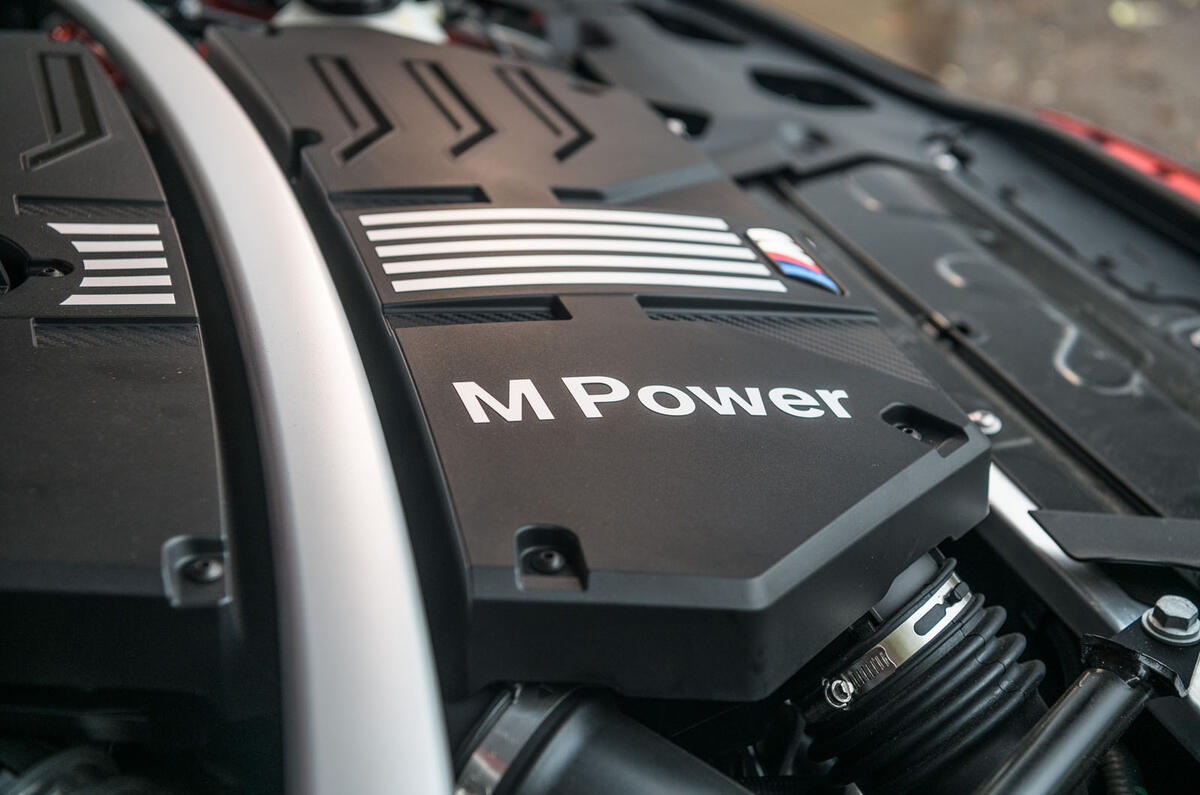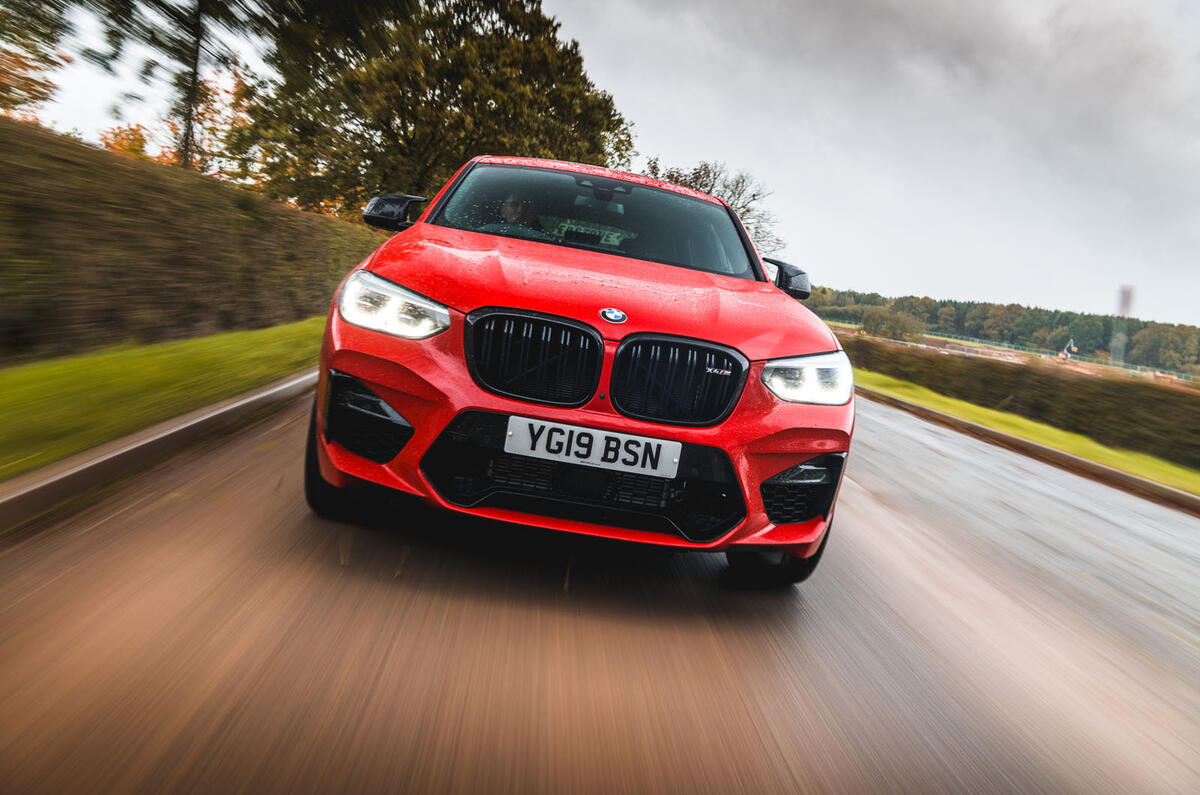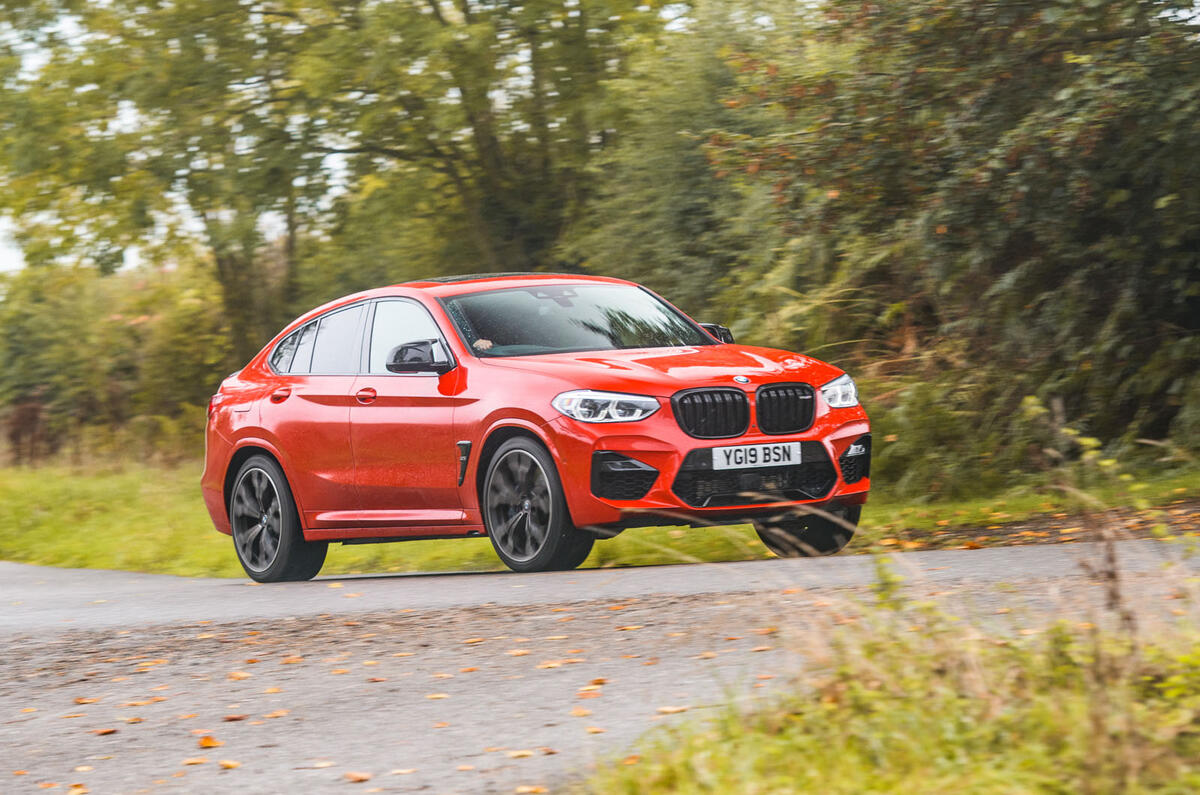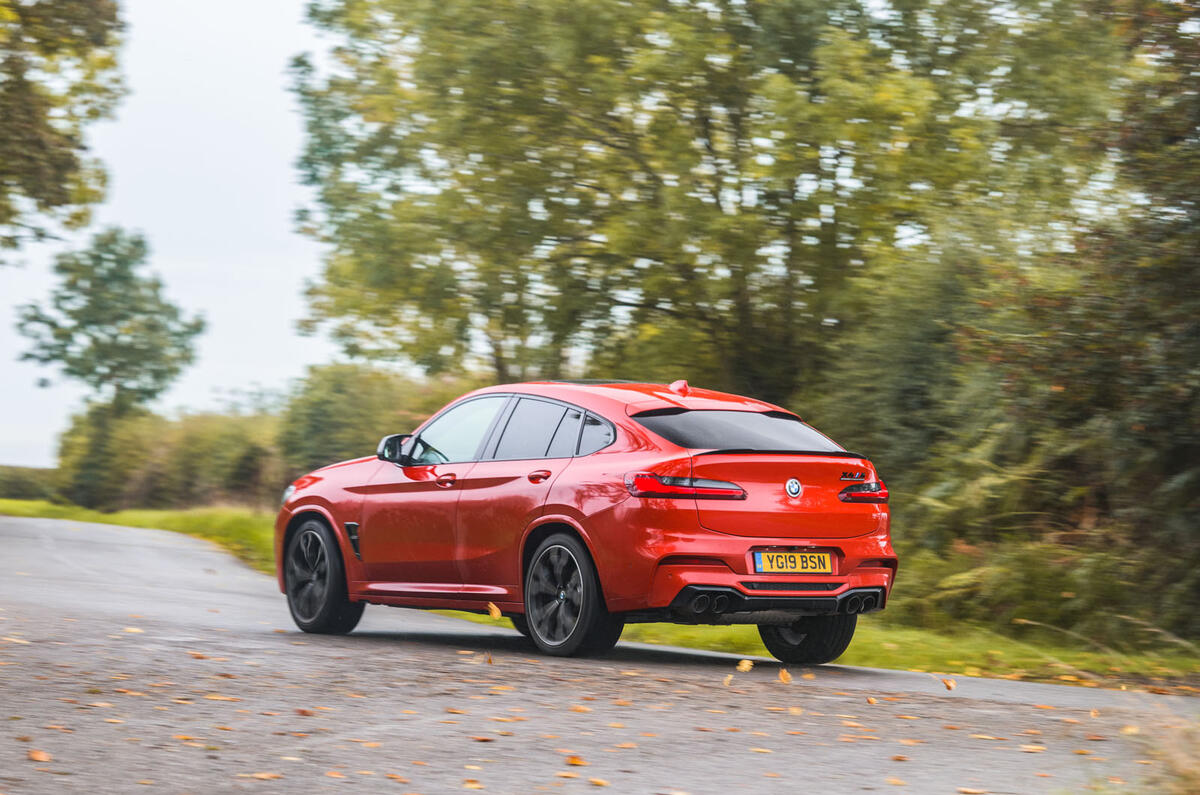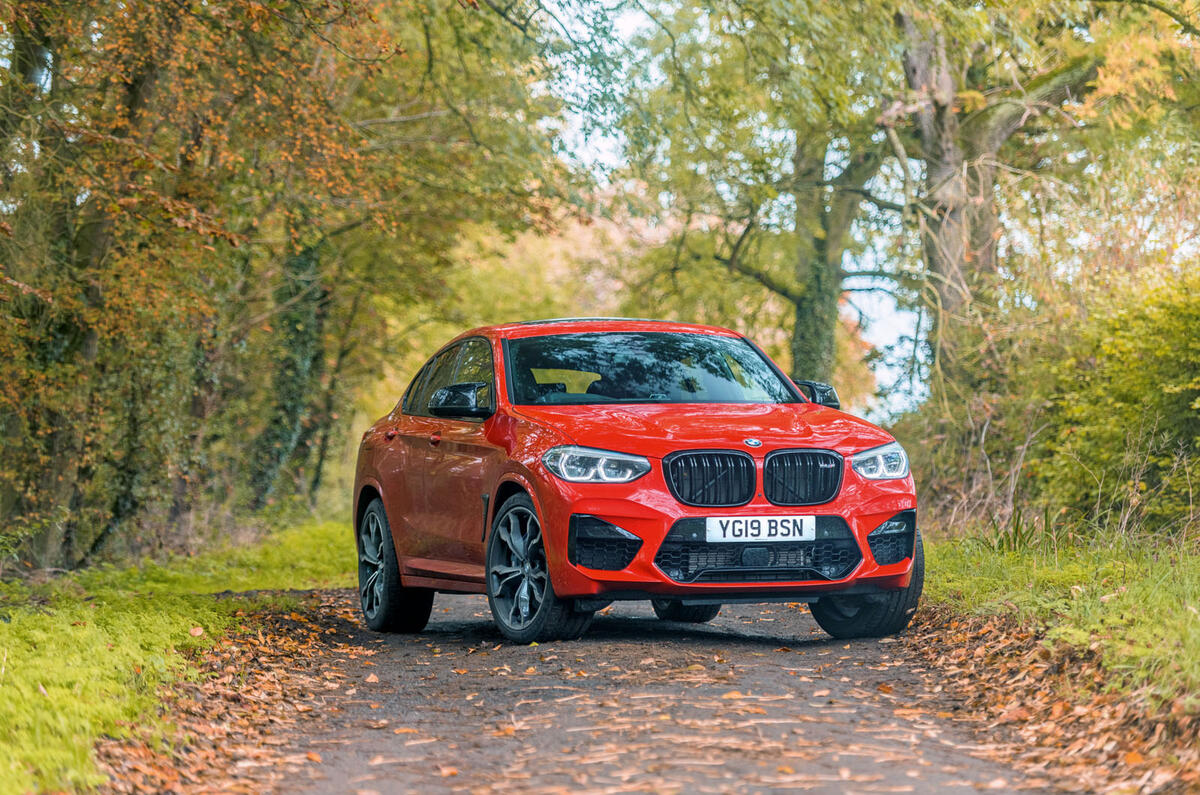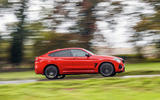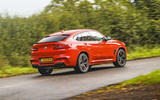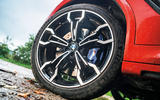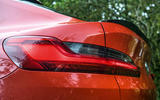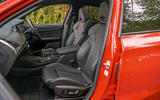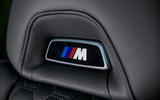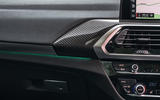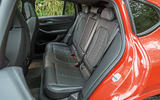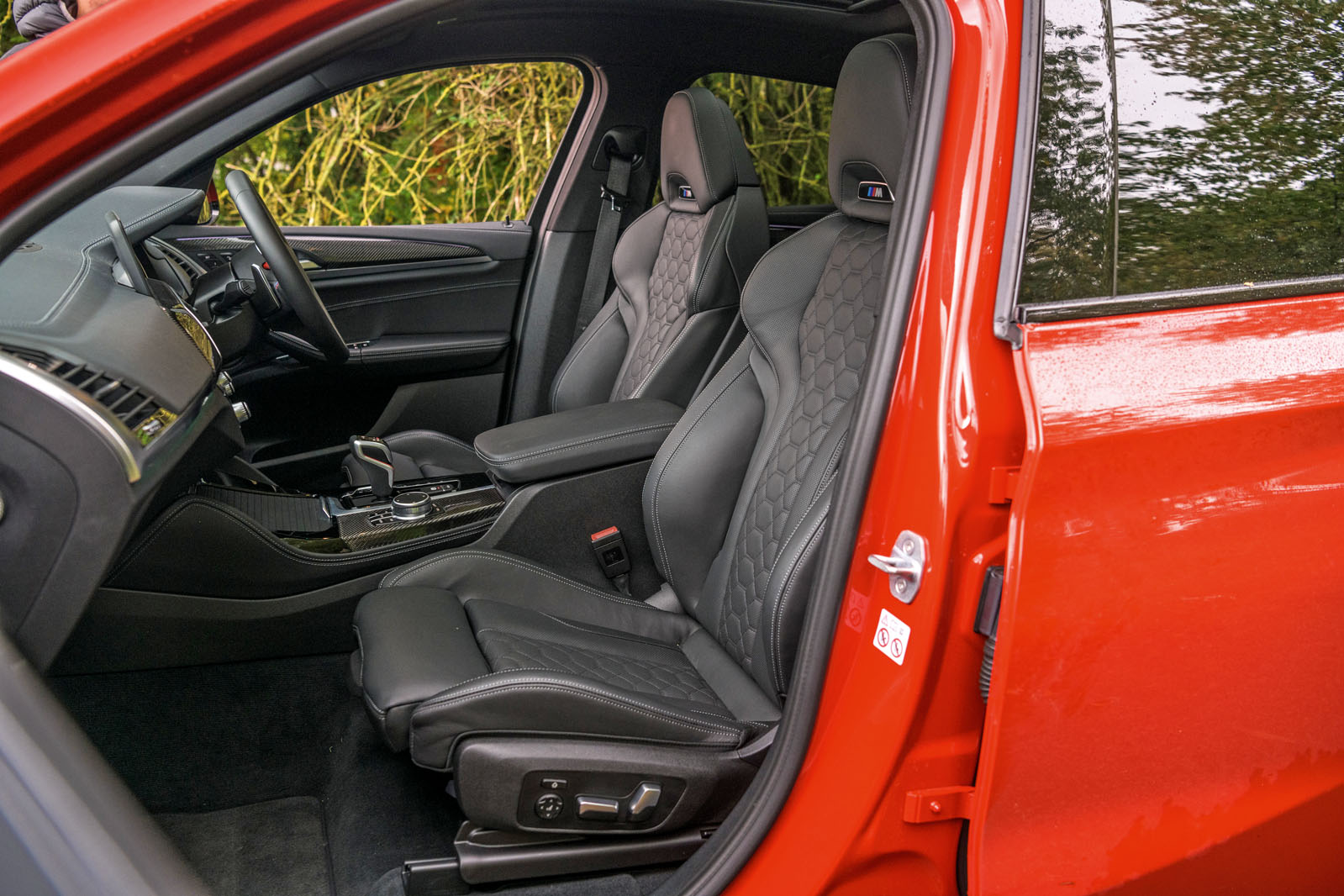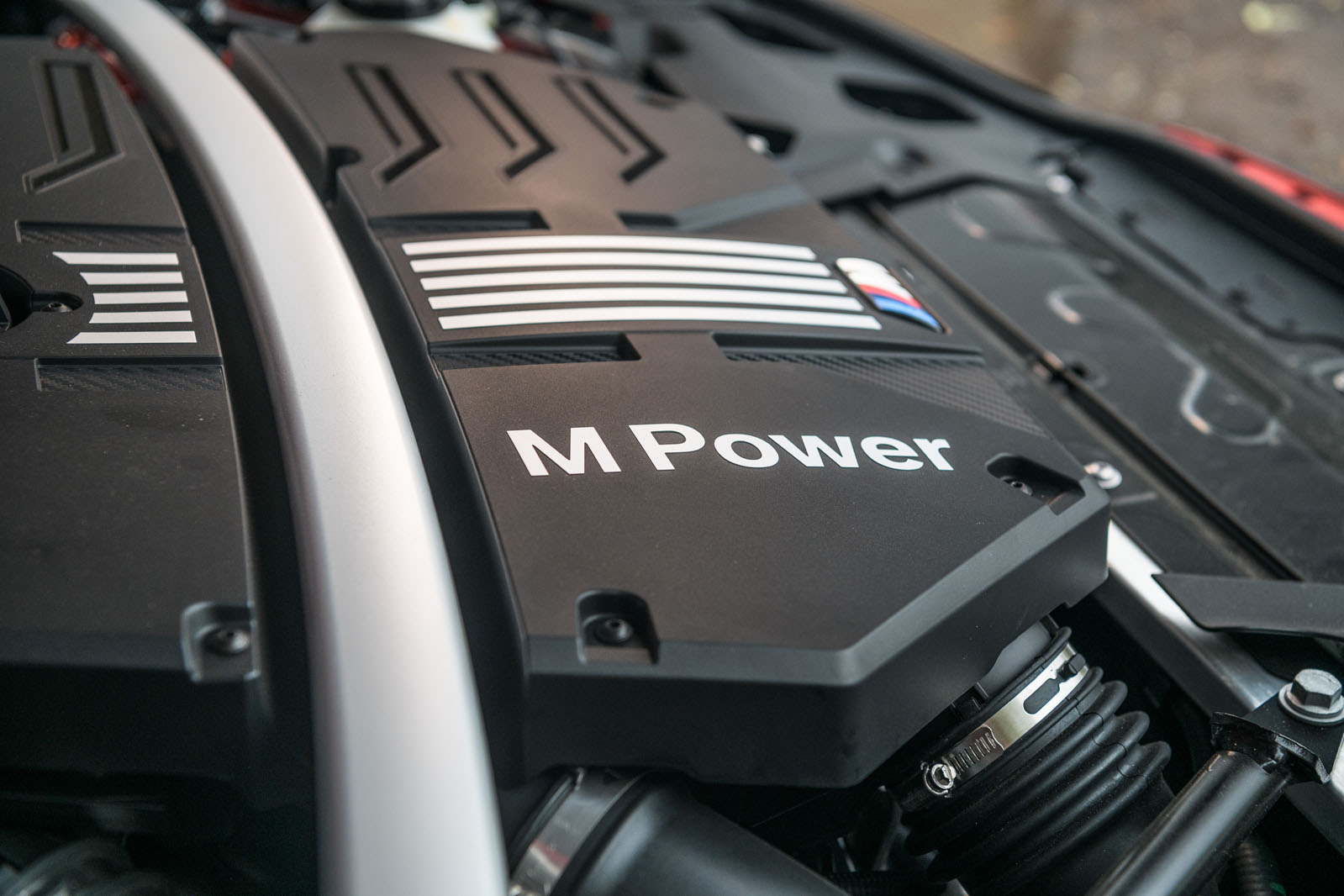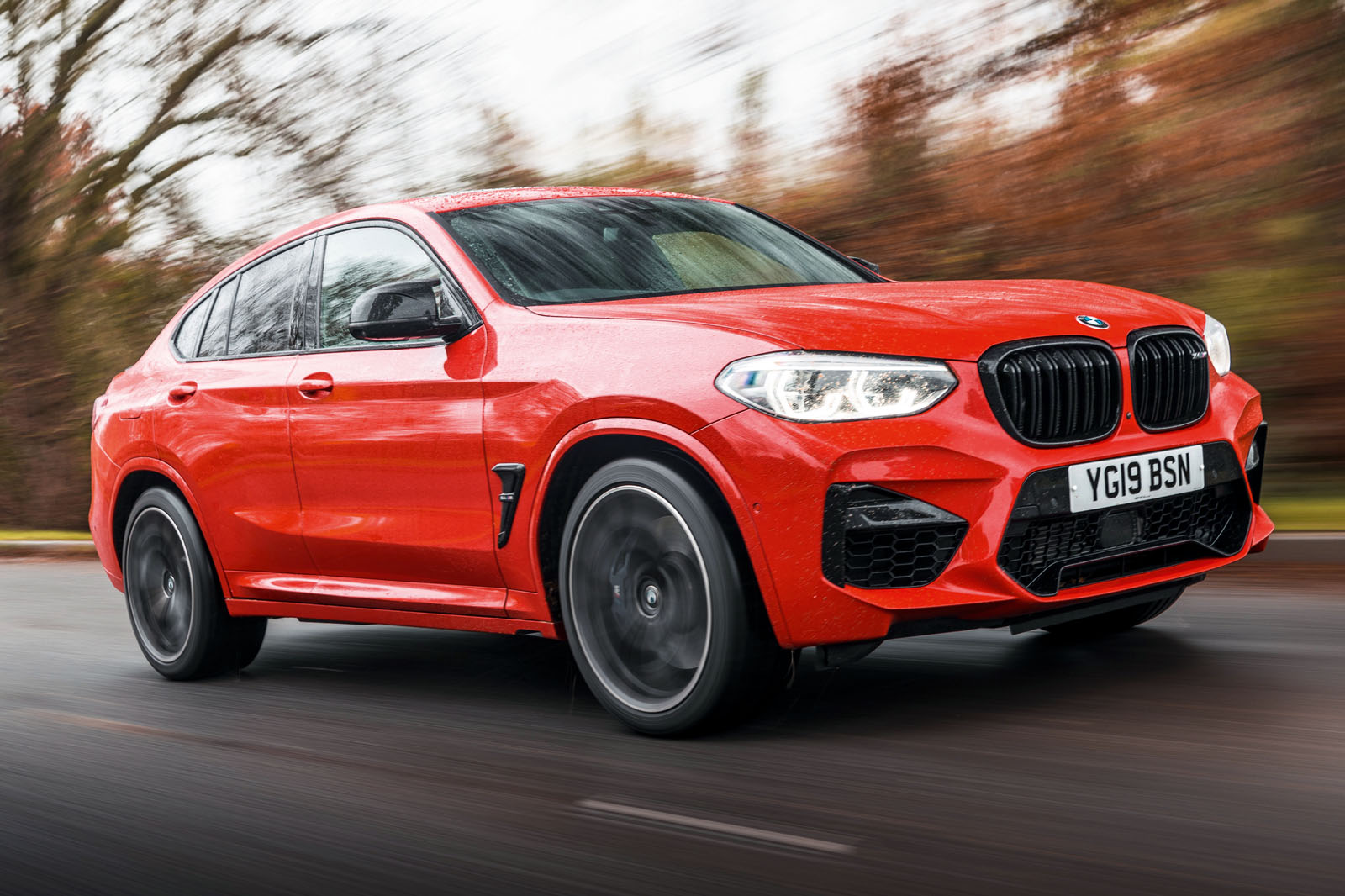During those wild moments, the car exhibits plenty of grip and traction and has all the body control and handling balance needed to sustain lots of cornering speed on a smooth surface. That the chassis declines to understeer as you accelerate beyond the lateral limit of the tyres but can snap quite suddenly into oversteer if you rein in the electronic stability controls makes it not unlike its immediate rivals from Alfa Romeo and Mercedes-AMG: finely balanced almost to a fault and exciting with it – but not particularly stable-feeling or inviting to drive quickly. Such are the problems that remain inherent in attempting to make big, tall, heavy SUVs handle like super-saloons, even in 2019 and with the very latest torque-vectoring four-wheel-drive systems involved.
The car’s stability on B-roads is considerably less impressive than on flatter surfaces, its ride becoming unyielding and excitable when given bigger, sharper inputs to deal with, and its on-board comfort levels deteriorate quite starkly. Someone who bought a performance SUV expecting a car more suited to rougher topography than a sports saloon certainly wouldn’t find their match with the X4 M.
The game of dynamic high stakes played by makers of performance SUVs might seldom present itself to a driver in everyday use, but drive the X4 M to its limits somewhere like the Millbrook’s Hill Route and you can’t fail to notice it.
It comes across as a sense that this car, like certain rivals, has a little too much agility, lateral grip and body control for its own good, and so it can be quite highly strung, unpredictable and a little unstable with its electronic aids disabled. There’s no shortage of keenness about the way it changes direction and no meagreness about the way it holds the road or supports its mass. Pour on power mid-corner and the driveline throws the lion’s share of torque at the rear axle.
Leave the traction and stability controls active and the car remains secure. But turn them off and you’ll find that the X4 M can take attitude very quickly on corner exit and feel on a knife edge as it runs short of grip.
COMFORT AND ISOLATION
This is where the X4 M Competition really starts to come unstuck. While it is undoubtedly fair to expect a degree of businesslike severity from the ride of any performance car, the general consensus among our testers was that BMW might be guilty of losing sight of why people buy SUVs in the first place. Everyday usability remains a key part of their appeal, even in go-faster form, and when a car rides as harshly as this one does, that usability is inevitably compromised – and to a level that might ultimately make this car feel little less pragmatic in daily use than either of its key rivals from Alfa Romeo or Mercedes-AMG.
Even with its adaptive dampers set to Comfort, this X4 M is a trying vehicle to drive. Taut to the point of very nearly feeling at odds with the Tarmac beneath its 21in alloys, its ride is defined by a persistent jostling and fidgeting that is at its most agitated on uneven country roads. Its body is so firmly sprung that there’s little room left for any compliance through compressions, and on tougher surfaces – even in BMW’s softer damper modes – that springing feels like it’s adversely affecting outright body control, not boosting it. At low speeds, the chassis stumbles over potholes and manhole covers with limited grace or sophistication, while motorways only go so far at settling things down.
The cabin is, at least, reasonably well isolated in relation to those of its rivals. There is a degree of wind noise at speed, but it’s the road roar generated by those 21in alloy wheels that announces its presence to the greatest extent. At a sustained 70mph cruise, our microphone returned a reading of 68dB – equal to an Alfa Romeo Stelvio Quadrifoglio and 1dB louder than a Jaguar F-Pace SVR.


